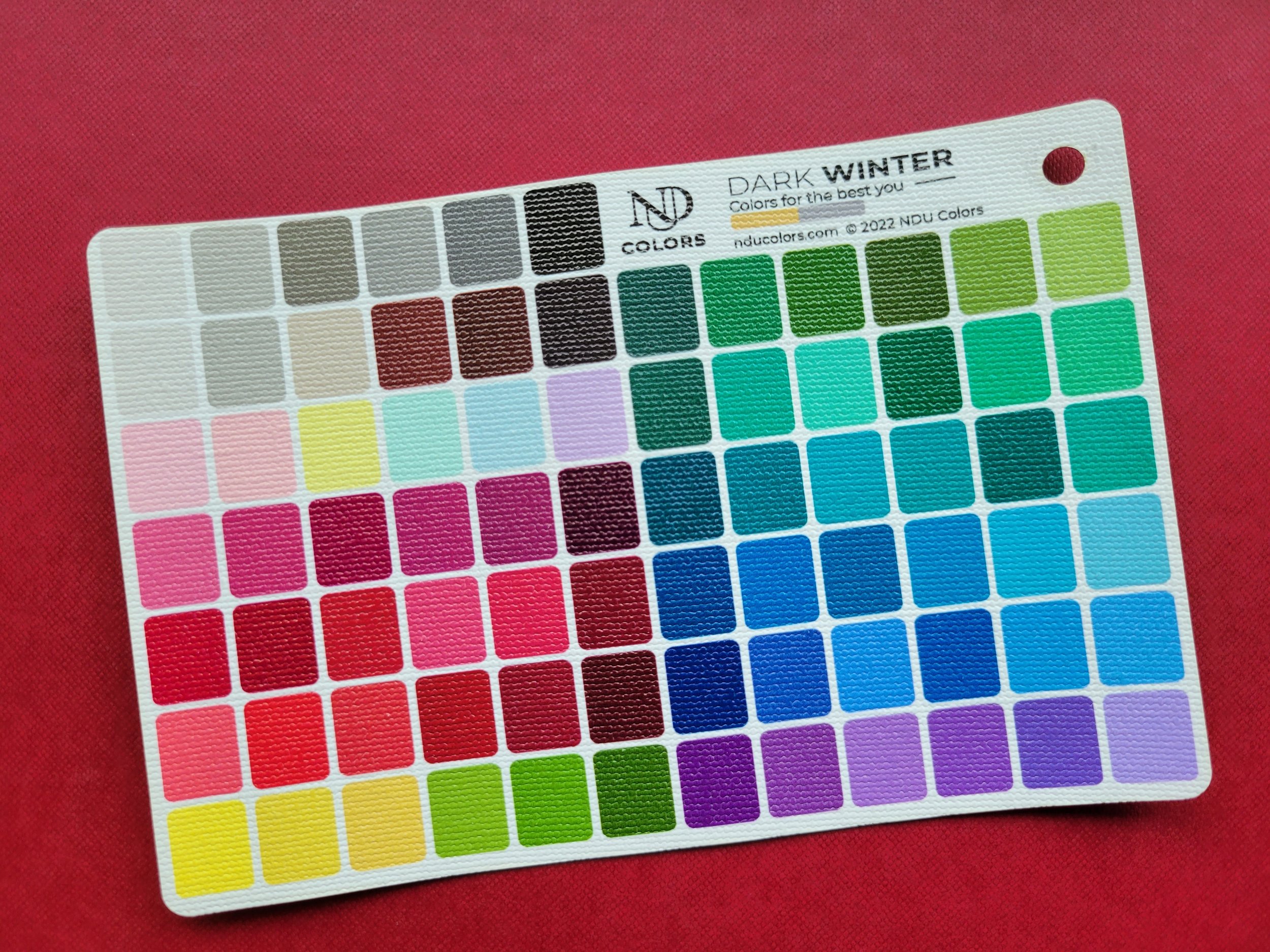I’m starting this series with the duo that was most-requested on Instagram: Dark Autumn and Dark Winter.
These two seasons are often mistaken for one another when assessing makeup and clothing. During a color analysis, it’s common for these two seasons to be the last ones standing. Why?
First, let’s explore their technical parameters:
Dark Autumn and Dark Winter are both situated between True Winter and True Autumn on the seasonal color clock, meaning that they are both blends of True Winter (cool, saturated, high contrast) and True Autumn (tawny, muted, medium contrast).
Dark Winter has a base of True Winter, with a dash of True Autumn’s warmth and richness. Dark Winter is a Cool-Neutral season.
Dark Autumn has a base of True Autumn, with a dash of True Winter’s clarity and saturation. Dark Autumn is a Warm-Neutral season.
One major difference between these two seasons is that Dark Winter contains “icy” colors: pure pigment with a drop or two of white added. Icy colors are light like pastels, but far more intense. My rule of thumb is that if you have to ask if a color is icy, it’s not. Dark Autumn doesn’t contain icy colors, and Dark Autumns are generally washed out by very light/bright colors like crisp white.
Darkness is the most important characteristic of these two seasons. That doesn’t mean Dark season people will necessarily look dark themselves, but they are enhanced by deeper colors in makeup and clothing.
What happens when a Dark Winter wears Dark Autumn colors, and vice versa?
Too-warm colors will turn Dark Winter skin more yellow than it naturally is. Shadows under the eyes or above the lips may be accentuated. Bone structure may soften into a pudding.
Too-cool colors will turn Dark Autumn skin more ashy than it naturally is, sometimes adding blue to the lips or a hazy cast to the eyes. The bone structure may look harsh, even vampiric.
Dark Winters can combine the dark and light extremes of the palette beautifully. Colors are sharp, intense, and slightly jewel-toned. The palette boasts colors such as eggplant, black coffee, and holly leaves and berries.
Dark Autumns will strive for a layered look instead of extreme contrast. Colors are rich, spicy, and organic. The palette boasts colors such as marigold, paprika, and rich olive.
How do these two seasons wear their makeup?
Dark Winter will go for an overall cooler and “cleaner” look, with contrast between eyes, cheeks, and lips. Eyeshadows like MAC Blanc Type and Satin Taupe are at home here, along with eyeliners like Lancôme Black Coffee or MAC Photogravure. For cheeks, smoked berry-rose like Surratt Rougeur or Fenty Cool Berry. And for lips, deep pomegranate shades like Bobbi Brown Red Velvet or MAC Russian Red are stunning.
Dark Autumn will go for an overall more blended look, with more tone-on-tone layering. Autumn eyeshadow palettes abound, and Dark Autumns will be flattered by colors like MAC Charcoal Brown and Woodwinked. For eyeliner, Hourglass Bronze or MAC Teddy. For cheeks, contour and bronzer can be beautiful depending the individual’s skin tone, with copper-red blush like MAC Ambering Rose or NARS Taos. For lips, scorched reds like Estee Lauder Decadent or MAC Dubonnet are gorgeous.
Can these two seasons “cheat” with some of the same colors sometimes?
Technically speaking, colors belong to one palette or the other, and people will be most enhanced and magical in their own season. But in real life, a Dark Autumn may occasionally wear a Dark Winter burgundy, or a Dark Winter may reach for a Dark Autumn navy without feeling the effect too terribly. The success of this can depend on the size of the piece (an earring vs a sweater), where on the body the color is worn, and the individual in question. I haven’t found these two seasons to share many makeup colors successfully.
If you’d like to explore these two seasons further, check out my Pinterest boards:

